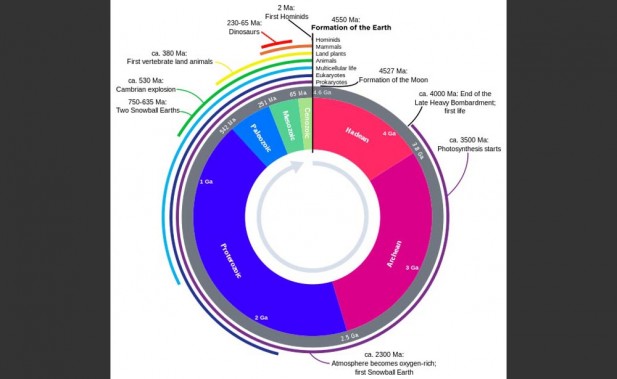
What is Paleoproterozoic?
The Paleoproterozoic is the first of three subdivisions of the Proterozoic Eon (occurring from 2.5 billion to 1.6 billion years ago (Ga). This period is marked by the first stabilization of the continents, and also when cyanobacteria evolved.
cyanobacteria is a type of bacteria that uses biochemical processes of photosynthesis to produce oxygen–
Experts have found paleontological evidence that during at least part of the Paleoproterozoic era, about 1.8 Ga, the earth year was about 450 days long, with days lasting only 20 hours.
Before an increase in atmospheric oxygen almost all life on the planet was anaerobic, meaning the metabolism of life depended on cellular respiration without the need for oxygen. In fact, free oxygen in large amounts would have proved toxic to most anaerobic bacteria. It is believed that the majority of anaerobic life on Earth died off during this period, which has been referred to as the oxygen catastrophe. The only life that would have survived, would have either been resistant to the poisonous effects of the oxygen, or would have spent its life in an oxygen-free environment.
The paleoproterozoic period had given rise to crown eukaryotes, which are the ancestral organisms from which all modern eukaryotic lineages have evolved.
This era is also marked by the earliest global-scale continent-continent belt collisions known. These continent and mountain building events occurred beginning about 2.1 billion years ago, and continued until at most 1.8 Ga. These continental collision belts led to the assembly of a Paleo-Mesoproterozoic supercontinent named Columbia or Nuna.
Image Caption: The geological clock: a projection of Earth’s 4,5 Ga history on a clock
(MA = a million years (Megayear) ago; GA = a billion years (Gigayear) ago). Credit: Woudloper/Wikipedia












